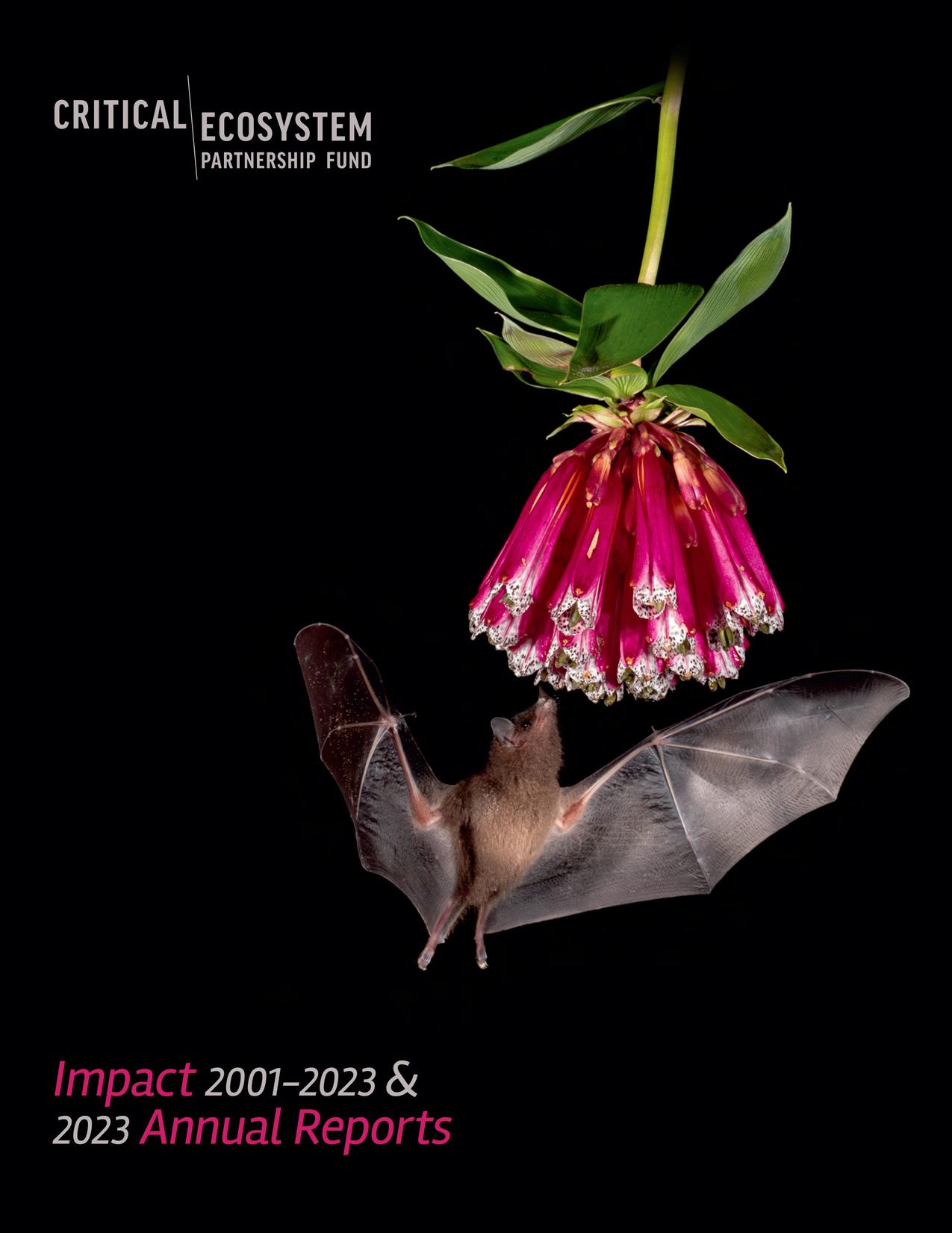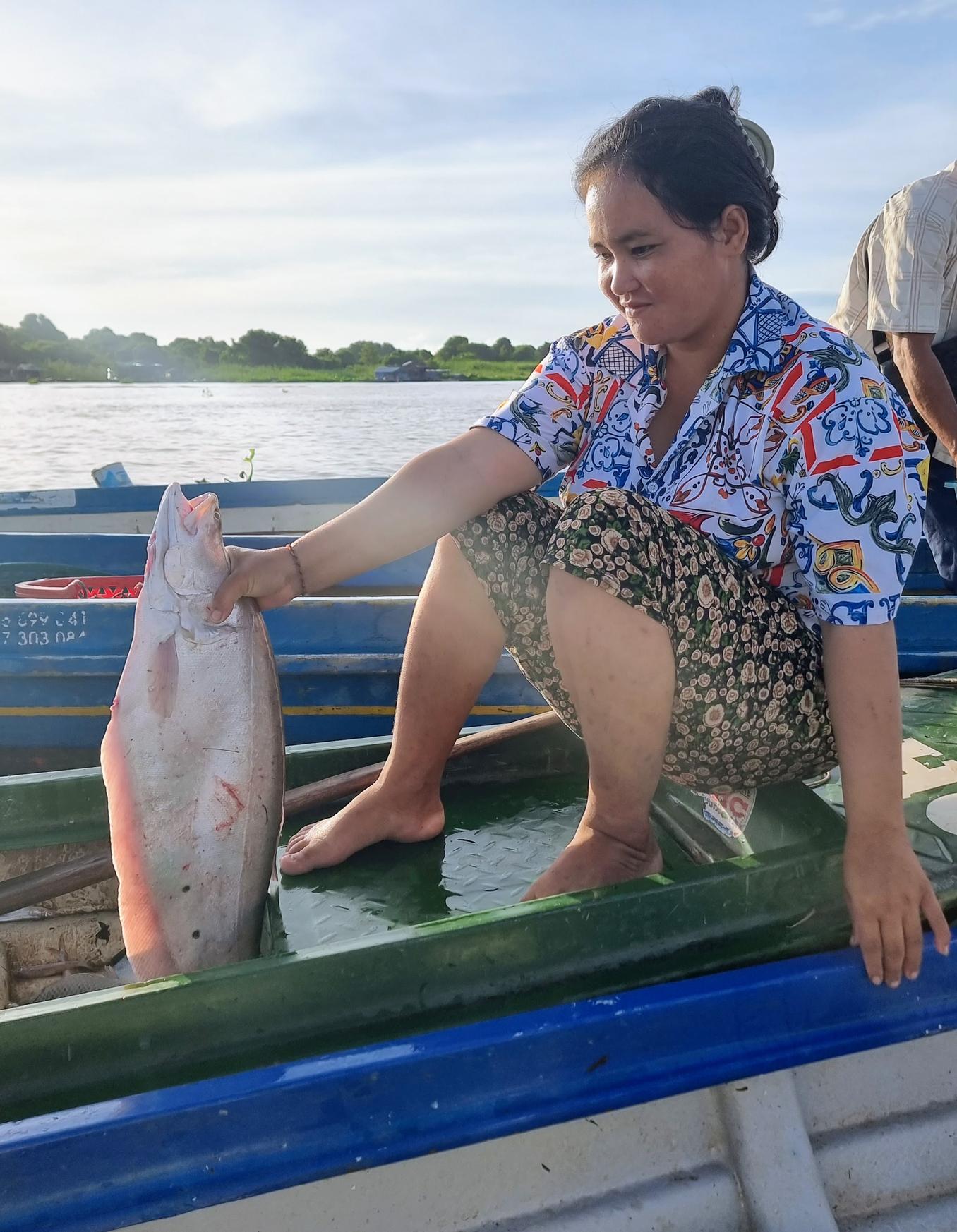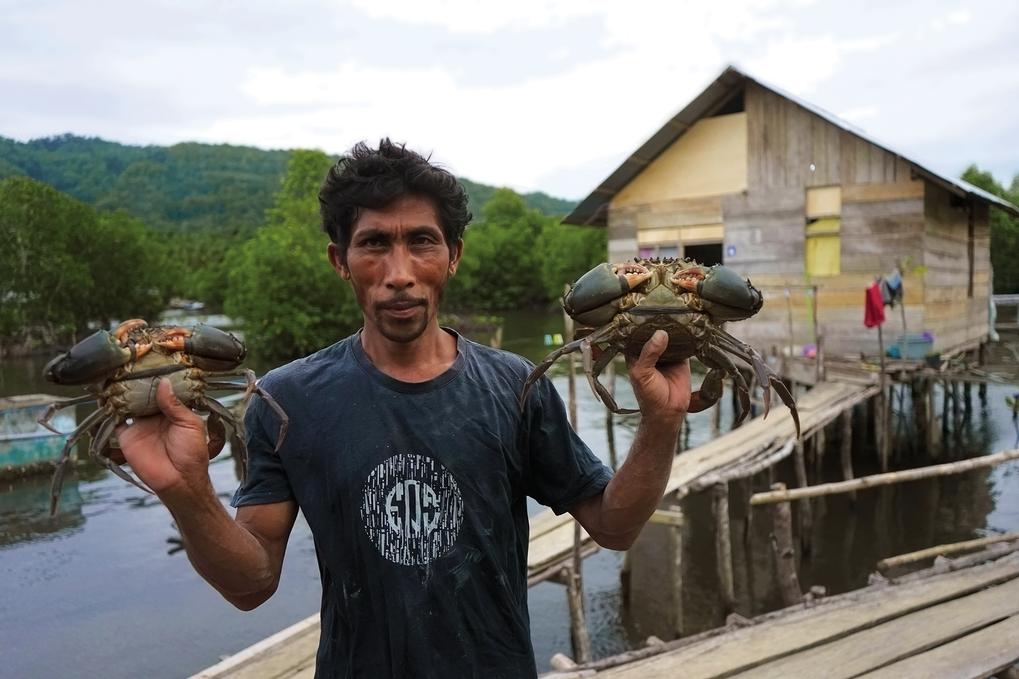
Biodiversity is fundamental to a healthy planet and thriving communities, but the world’s species are under extreme threat. The Critical Ecosystem Partnership Fund (CEPF) fills a unique, strategic role in addressing the extinction and climate crises by supporting civil society — nongovernmental organizations, communities, Indigenous peoples, and academic and private sector entities — to protect the world’s biodiversity hotspots.
CEPF is a joint initiative of Conservation International, l’Agence Française de Développement, the European Union, Fondation Hans Wilsdorf, the Global Environment Facility, the government of Japan and the World Bank.
By catalyzing conservation strategies guided by local input and providing grants to civil society organizations to implement those strategies, CEPF protects biodiversity, supports ecosystem-based adaptation to climate change, builds local conservation leadership and nurtures sustainable development. This path enables nature and communities to flourish together.
For more information, visit CEPF’s website.
By the numbers
Since CEPF’s inception in 2000, more than $300 million in grants have been given to more than 2,700 civil society organizations and individuals in more than 112 countries and territories around the globe — leveraging more than $431 million in additional funds from other donors.
The Approach
Local Management
CEPF partners with a regional implementation team in the biodiversity hotspot to build local conservation leadership and capacity, and shepherd CEPF’s investment in the hotspot.
Donor Partnership
Since 2000, CEPF has been bringing together donors to conserve biodiversity, strengthen civil society and support sustainable development.
Focused Investment
Following an assessment of opportunities and threats, CEPF donor partners choose which biodiversity hotspots to invest in as funding becomes available.
Participatory Priority-Setting
Grant-making is guided by ecosystem profiles — analyses of the biodiversity and socioeconomic conditions in each hotspot. Profiles are produced by, and in consultation with, local and national stakeholders.
Grants to Civil Society
Civil society entities, including nongovernmental organizations, Indigenous and local communities, academic institutions and local businesses, apply for grants that are awarded on a competitive basis for projects that contribute to CEPF’s conservation strategy.
Enduring Conservation
Projects funded by CEPF add up to a portfolio of complementary conservation actions addressing critical priorities. They also build local conservation communities that will continue to lead protection of the hotspots after CEPF funding is completed.
Achieving Global Goals
The results achieved by CEPF grantees complement governments’ efforts to meet targets related to the U.N.’s Convention on Biological Diversity (the Kunming-Montreal Global Biodiversity Framework), the U.N. Framework Convention on Climate Change, and the U.N. Sustainable Development Goals.
In addition to establishing or expanding protections for more than 17 million hectares (42 million acres) of critical ecosystems, CEPF grantees have improved the management of more than 55 million hectares (136 million acres) of Key Biodiversity Areas — simply put, the most important places for life on Earth — and more than 12 million hectares (29 million acres) of land used for crops or other agricultural products.
Featured publication

Browse the most recent impact and annual reports from CEPF.
Examples of Grantee Results

Building Financial Sustainability for Community-Based Fisheries in Cambodia
Life on and around Cambodia’s Tonle Sap Lake is dominated by fishing and seasonal fluctuations in water levels. About 90 percent of people in the area are directly and exclusively dependent on fish stocks for food and income. Fish are also an important part of a diverse ecosystem whose health is essential to humans and many other species.
CEPF grantee Fisheries Action Coalition Team (FACT) worked to develop ongoing sources of funding for community-based organizations that co-manage local fisheries. Their efforts resulted in an agreement with Cambodia’s Ministry of Home Affairs to allocate part of the budget of communes — administrative subdivisions of districts — to 10 community fisheries organizations. The long-term goal is to scale this funding model up to the national level.
The project also improved local management of conservation zones to ensure long-term viability of fish populations. Project-driven increases in the institutional capacities of four community fisheries organizations supported their successful partnership with the government to oversee these important resources.
The project resulted in the creation of six new fish conservation zones, totaling 1,323 hectares (3,269 acres).

Restoration Benefits Water Supplies and Coffee Production in Brazil
The Cerrado Mineiro in southeast Brazil is a vast area known for its high-quality coffee and, more recently, droughts and erratic weather patterns that affect both coffee production and the water supply for the region’s urban centers.
To address this crisis, coffee growers, international roasters, nonprofit organizations and researchers came together in 2015 to create the Cerrado das Águas Consortium (CCA). CEPF joined the effort through a grant to the local organization Cerrado Mineiro Development Foundation (FUNDACCER) to support development of a pilot program to assist coffee growers with sustainable agriculture methods, monitoring water resources and developing land-use approaches that address climate change.
From 2019 to 2022, CCA worked with 57 producers on 73 properties to develop strategies to manage landscapes and the effects of climate change on more than 500 hectares (1,235 acres). Efforts included setting up plots for research on restoration using 22 species of native plants. The research yielded valuable lessons about the resilience of the different species, the factors affecting seedling survival and key threats to native vegetation.
One of the project collaborators, the Cerrado Seeds Network (Rede de Sementes), developed a training course for seed collection and land restoration. This resulted in eight new partnerships to expand the restoration effort.

Mangrove and Mud Crab Management Brings Increased Income
On Peleng Island, part of Indonesia’s Central Sulawesi Province, the mud crabs (Scylla serrata) that thrive in mangroves feed people and fuel the local economy. So, growing threats to the mangroves — from land conversion, development and the harvest of wood for construction and energy — are imperiling both the crabs and the way of life for local communities.
With a grant from CEPF, the Salanggar Association worked with fishermen from three villages — Saiyong, Ambelang and Manngalai — to manage the mangrove ecosystem, ensure sustainability of the crab harvest, introduce a governance system to regulate fishing areas and the size and sex of harvested crabs, and strengthen marketing strategies.
The villages lie along a bay on the northern part of the island, an area of extremely high significance for biodiversity. The bay is part of the larger Peleng-Banggai marine Key Biodiversity Area, which encompasses the Banggai Dalaka marine protected area. That protected area includes part of one the most threatened coral reef zones in the world.
Training was an important part of the project, with 132 people from the three villages trained in many aspects of mangrove and mud crab management. The result has been that the people living on the edge of the Peleng-Banggai Key Biodiversity Area are better equipped to not only protect this unique area, but also to benefit from it.